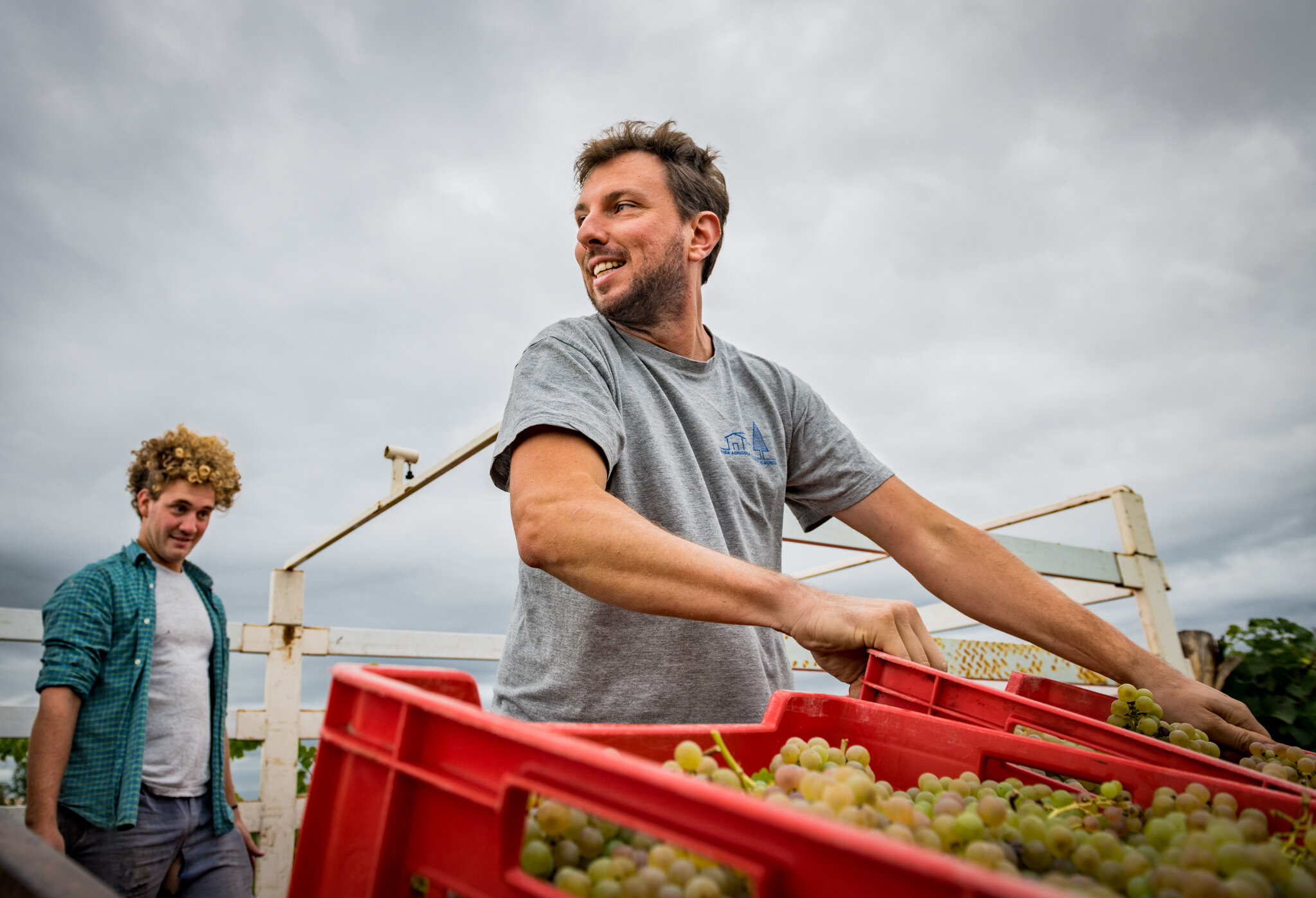
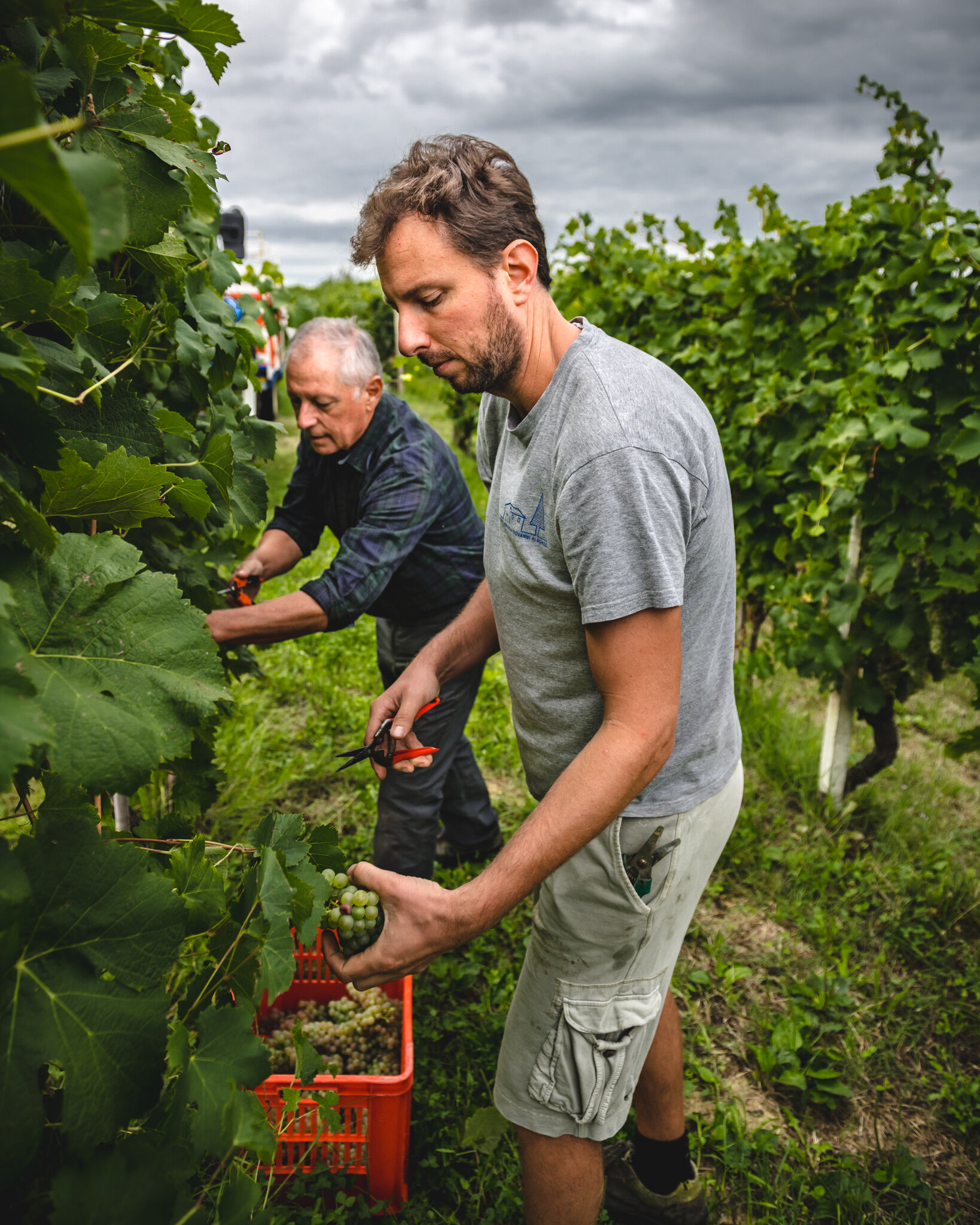

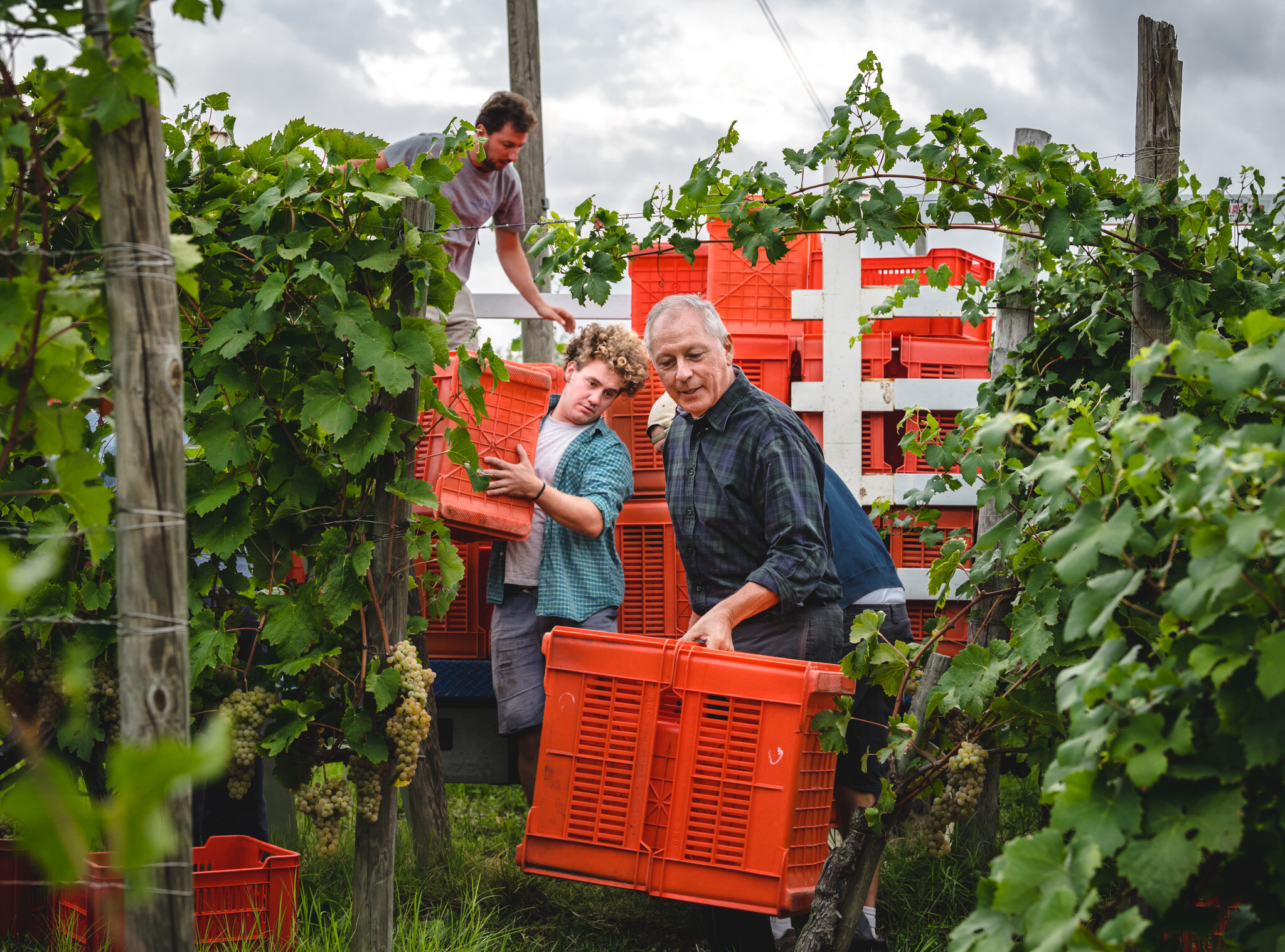
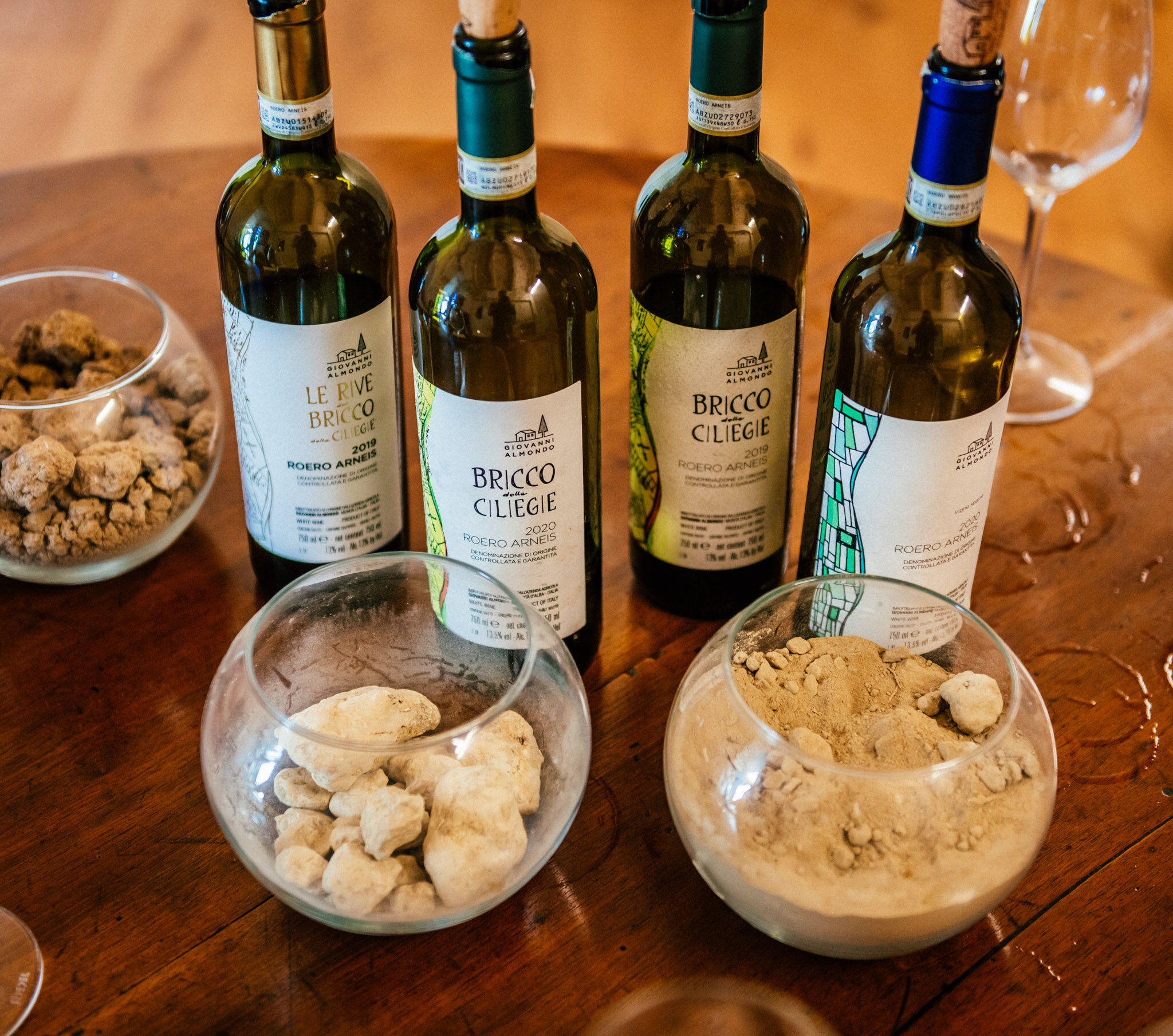
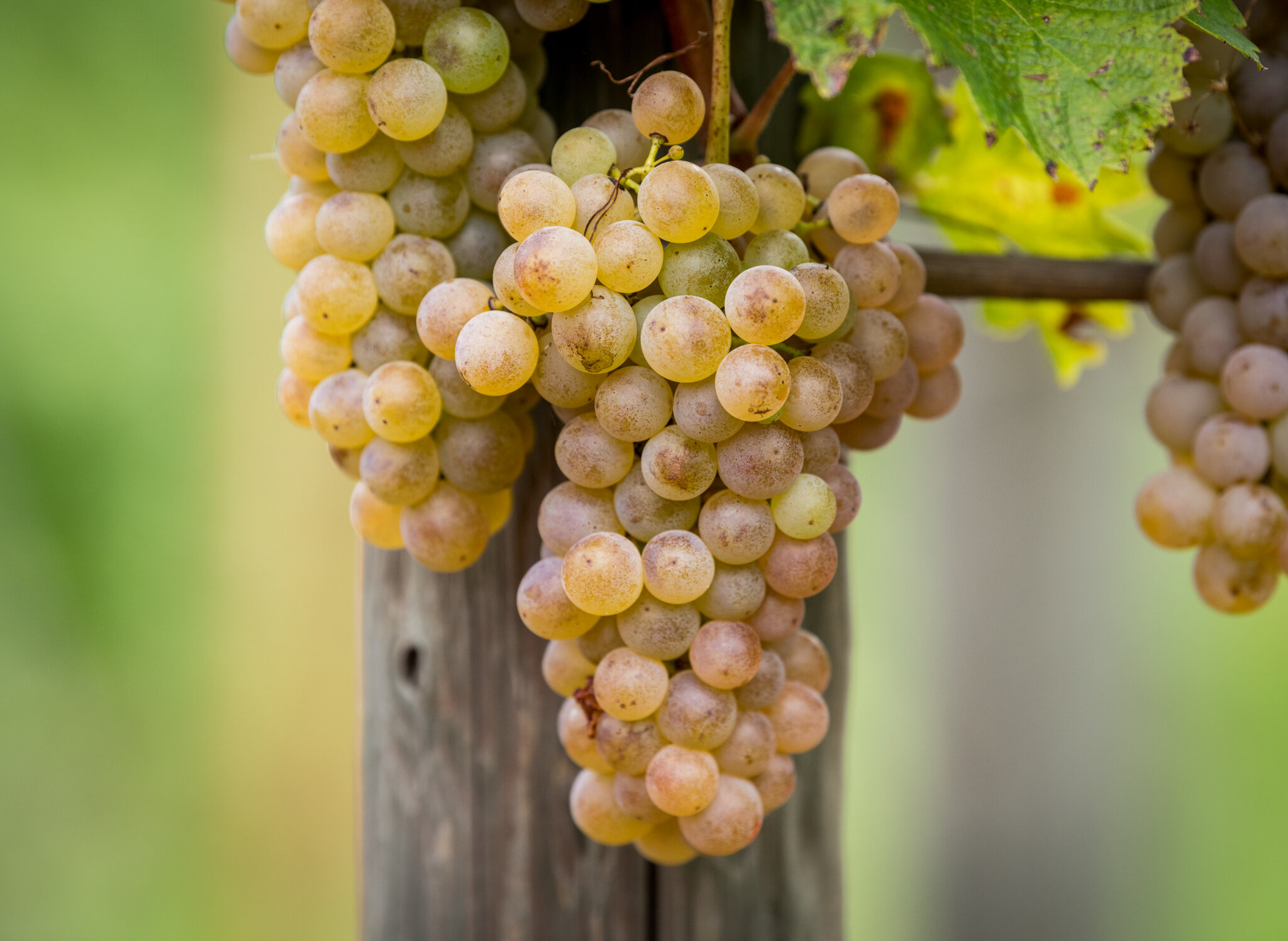
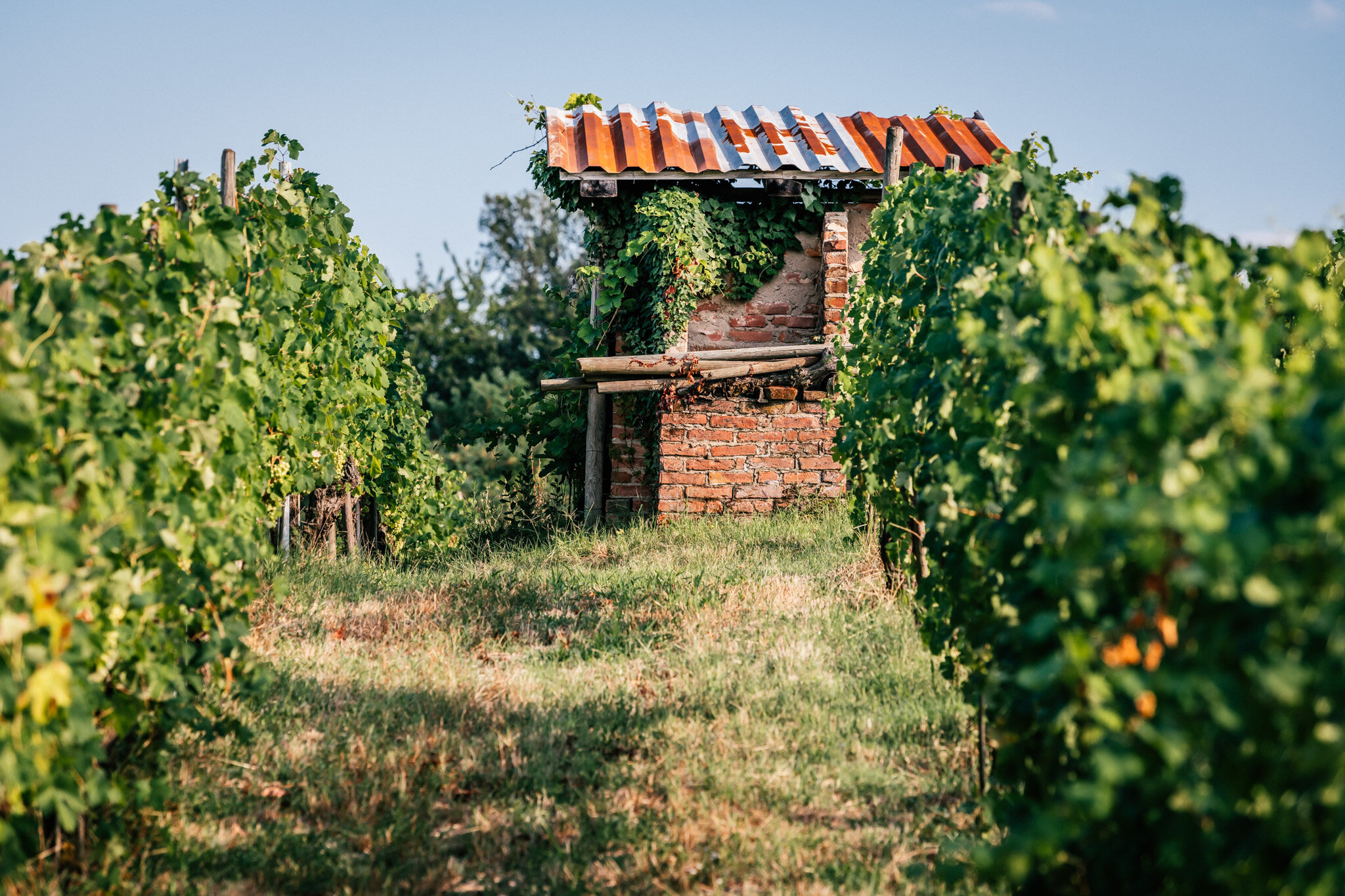
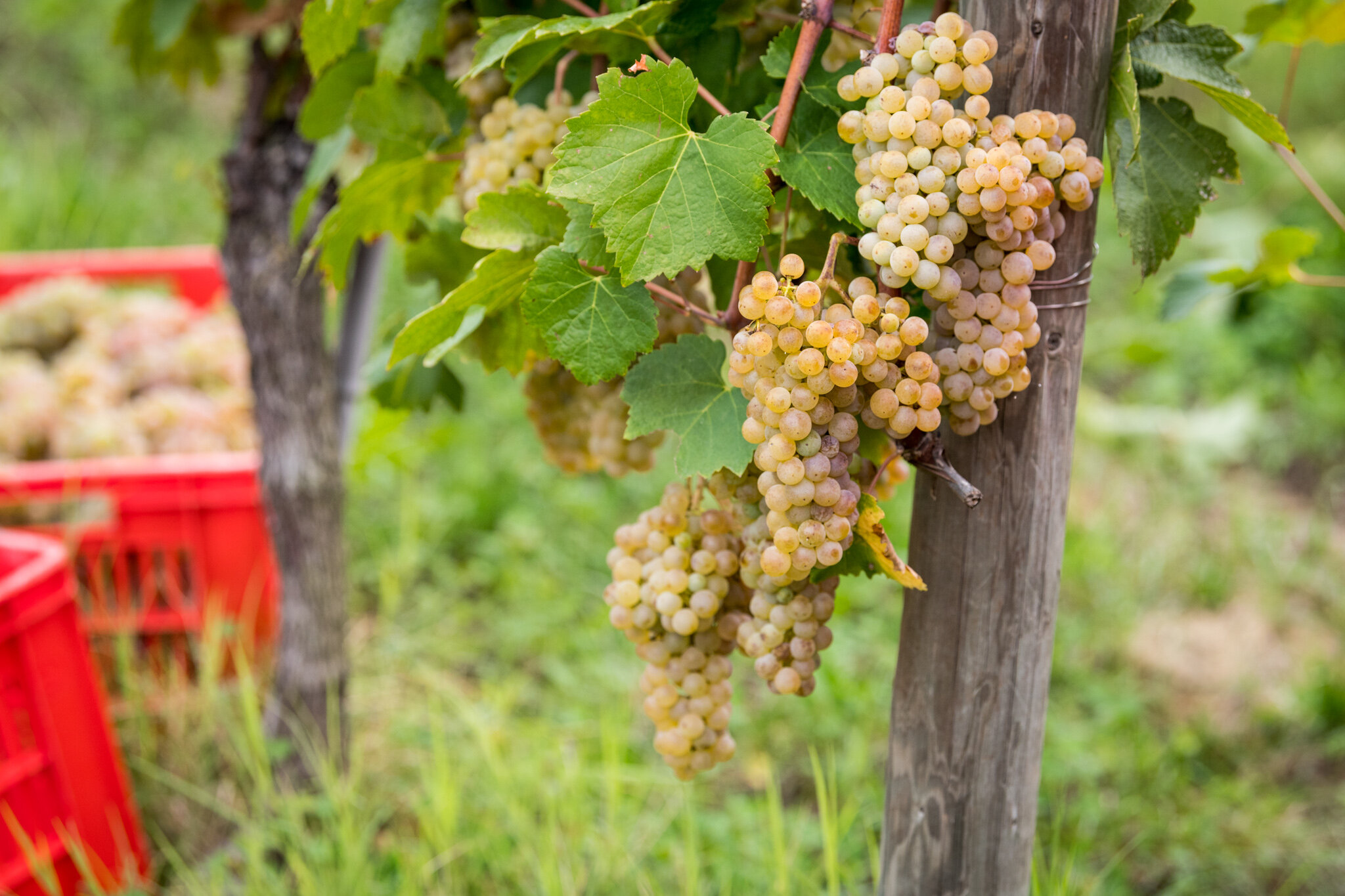
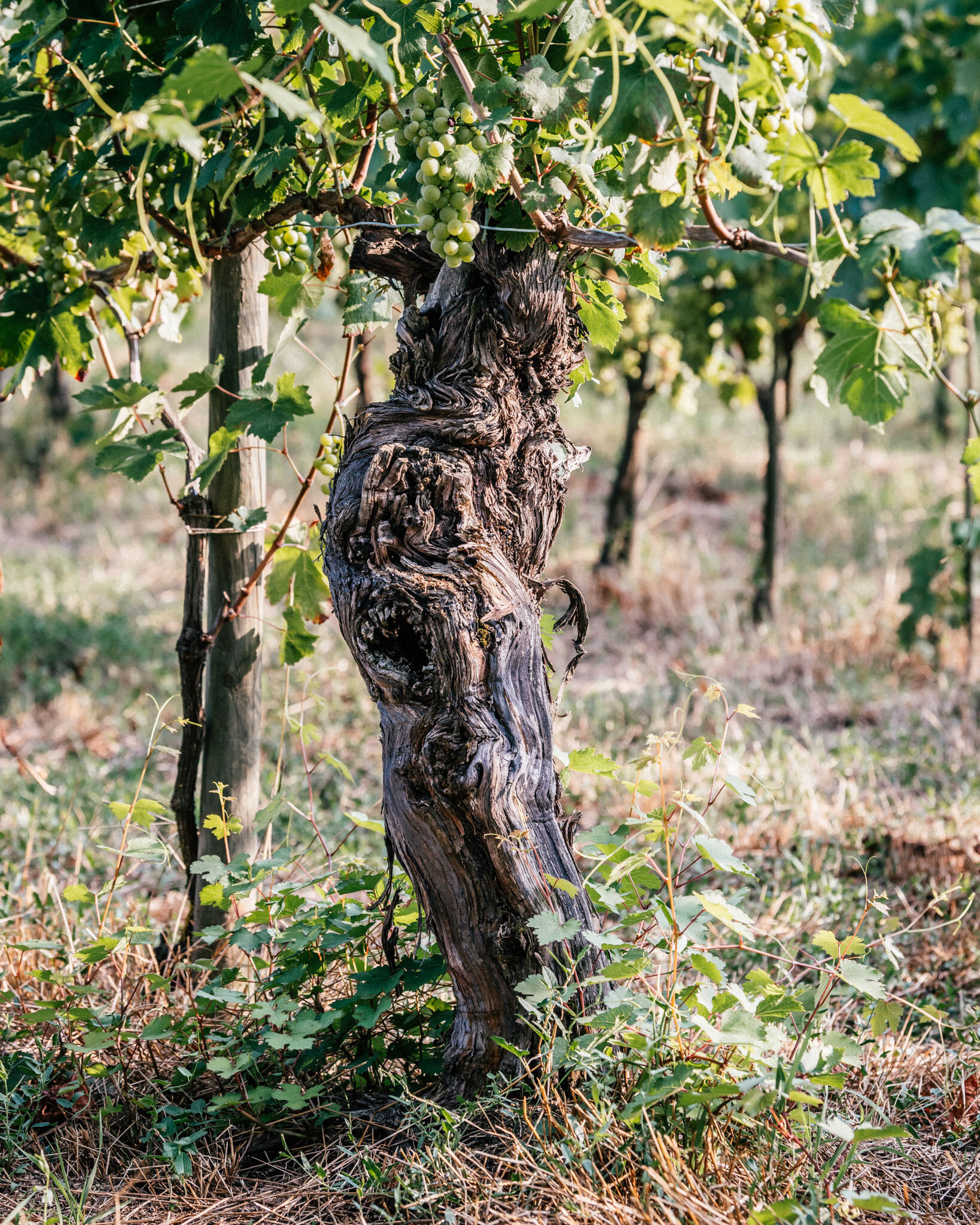
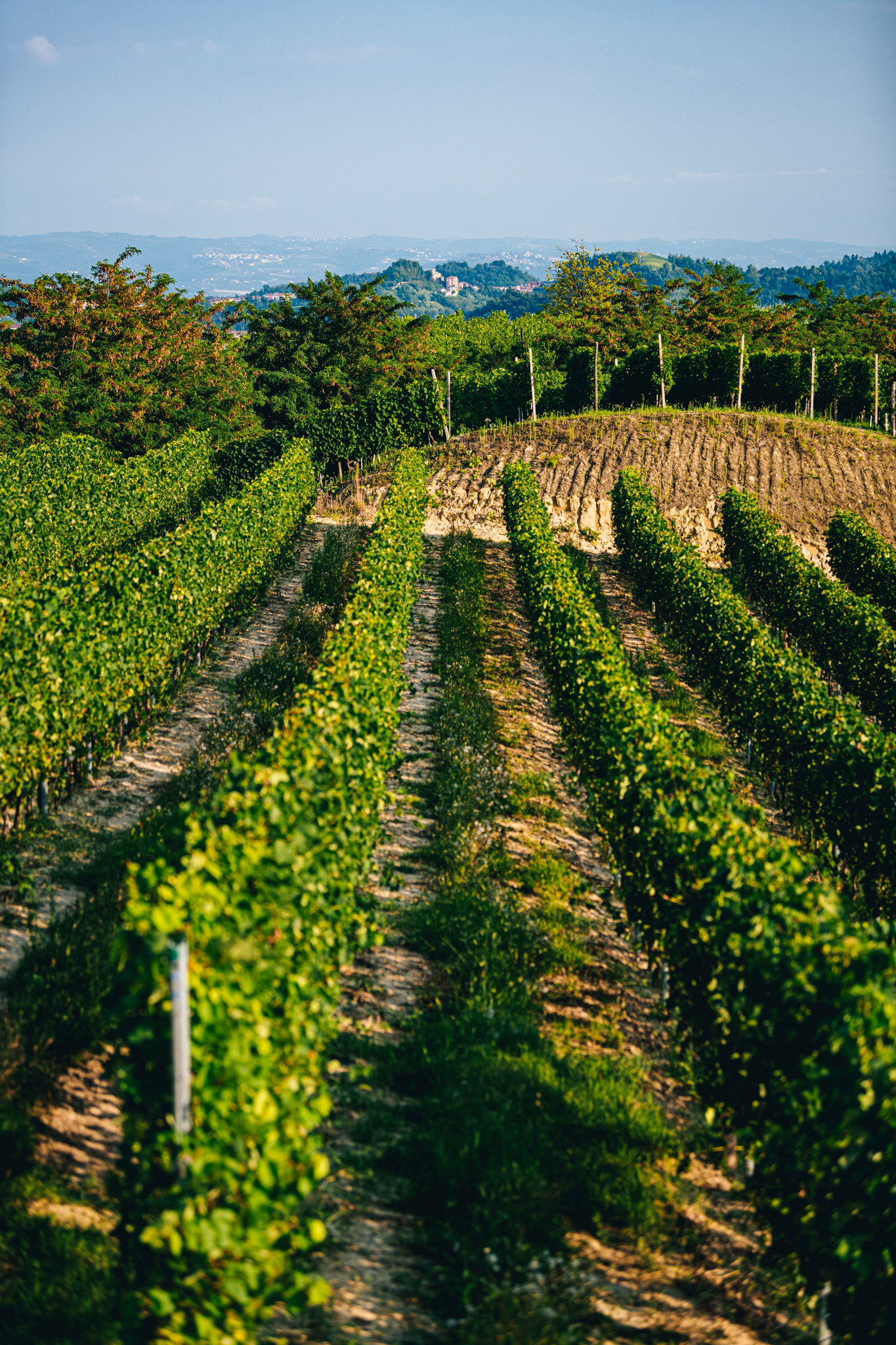
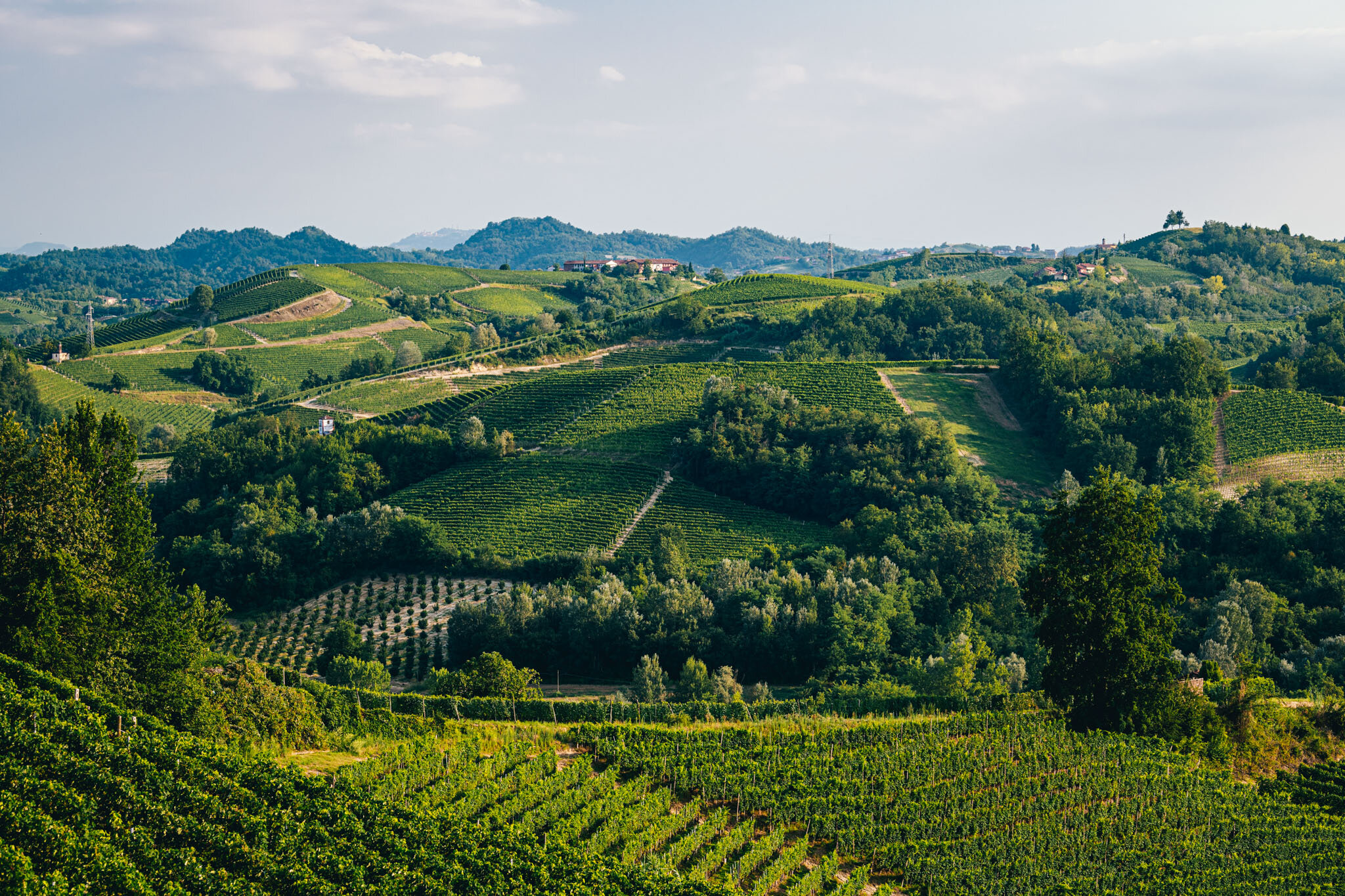
Giovanni almondo
Who: Domenico Almondo with his sons Federico & Stefano
Where: Montà, Roero (Piemonte, Italy)
What grapes: Arneis, Riesling, Nebbiolo, Freisa, Barbera
Key facts: The Almondo Family has a deeply rooted history in the region dating in the 14th century, but their attitude towards winemaking is anything but antiquated.
Website: https://giovannialmondo.com/en/
Giovanni Almondo “Bricco delle Ciliegie” Roero Arneis DOCG
Viticulture: Certified organic
Soil type: Sandy with clay veins, calcareous (60% sand, 15% limestone, 25% clay)
Elevation: 340m – 370m
Grapes: Arneis
Method of fermentation: Aging in stainless steel vat for 10 months, 5% non toasted barrique (french oak)
Chalk. Lemon. Pear. Three hectares of old vines are included in this blend. According to Stefano Almondo, the “real” Roero is five villages, a tiny area typified by sandy soils. His hometown of Montá is in that small zone. His family’s certified-organic winery makes 80-90,000 bottles of Arneis per vintage, all from estate-grown fruit. — JM
Giovanni Almondo “Vigne Sparse” Roero Arneis DOCG
Viticulture: Certified organic
Soil type: 3 types
1. sandy: 80% sand, 15% limestone, 5% clay
2. clay and calcareous: 35% sand, 25% limestone, 40% clay
3. acidic clay (ph 5,5): 40% sand, 30% limestone, 30% clay
Elevation: 310m – 370m
Grapes: Arneis
Method of fermentation: Aging in stainless steel vats on lees.
Lotta wow factor in this one. Aromatically forward is an understatement. White peach, pear, citrus, borderline tropical. - JM
Giovanni Almondo Roero DOCG
Viticulture: Certified organic
Soil type: Sandy, calcareous (70% sand, 20% limestone, 10% clay)
Elevation: 320m
Grapes: Nebbiolo (Lampia, Michet, Picotendro)
Method of fermentation: 18 months in big cask (non toasted slavonian oak)
Spicy forest berries. For the time being, some of this bottling comes from a steep, 70-year-old vineyard. Eventually the Almondos will use that fruit for some riserva or single-parcel offering. As it stands, this Nebbiolo over-delivers to a shocking degree. It’s a strong personal favorite. — JM
My journey to Giovanni Almondo
Wine importing can be arduous. Slow. You could argue that I willfully make it that way. A different importer could be flitting around the globe, willy-nilly pulling the trigger on big deals. Or simply thinking on their feet.
I require time. Acres of it. Rumination to dispel all the iterations of what’s going to derail our utopian plans, months and years to beat back the demons. Even when I walk through the doors of an iconic estate, my process remains slow. PWI doesn’t have the resources to weather numerous missteps.
In the early 2000s you could find the wines of Azienda Agricola Giovanni Almondo in North Carolina. These were my formative Italian wine drinking years, and I was smitten by Almondo’s Arneis, in particular. Everyone was. The farm raised the level for this oft-overlooked grape with theie Bricco degli Ciliegie single-parcel bottling. Other estates (Giacosa, Vietti) crafted notable Arneis, but this was a wine of terroir writ large, a world-class white at a very moderate price.
I was hooked. I read all I could on Giovanni Almondo’s path in Roero, and bookmarked the estate for further exploration. A few years after getting the doors open at Piedmont Wine Imports, I knocked on this one. It was 2017 when Stefano Almondo first showed me around. The estate was a sure bet. Their other wines (the Roero Nebbiolo in particular) matched the precise character and high level of quality of the Bricco degli Ciliegie. The winery was looking forward. Domenico Almondo was around, still working hard, with both sons at his side. The cellar had been upgraded in 2015. The farming was organic, the parcels were perfect for quality viticulture: steep, remote, bordered by woodland. I loved it all.
Yet years went by. I asked collaborator Jeff Bramwell to check in. He confirmed my position: these wines are excellent. Jeff documented it all memorably in photos. As soon as my mind was 100% made up, Covid swept all plans into the dustbin. We sat on our hands for another 18 months.
Finally, in July of 2021, we returned to Montá in Roero, to taste again, to look at even more beautiful vineyard sites, and (praise be) to share a meal. Stefano must have the patience of a saint, or maybe he simply finds our dithering amusing. I don't think our slothfulness is entirely without virtue. If anything, the wines have improved in the four years we’ve kicked around the idea of forming this partnership. Bricco degli Ciliegie remains a benchmark. This seminal wine is harvested from vines pieced together on a hillside called Vittori, a location that used to be solely planted to cherries, hence the name. In terms of importance, as the realisation of an ambitious dream, it’s the top wine for Almondo. Stefano believes it can age for 10+ years.
But I’ll likely drink the family’s Vigne Sparse Arneis more often. The precision, minerality, sheer refreshment offered by the Almondo’s glass-pourable Arneis will ferry cases of Vigne Sparse into my wine fridge. Oyster. Salt. Phenomenal palate-feel. An outstanding, long, savory finish. Stefano said they now include three hectares of old vine fruit in the Vigne Sparse, which might explain why this entry-level bottling oozes character.
And then there’s the Nebbiolo. Happily, the Almondos also have six hectares of red wine vineyards. Really it’s not much: Bricco degli Ciliegie alone is eight hectares. From a smallish footprint of red vines, Almondo crafts a Roero Nebbiolo that brings joy like few wines I’ve tasted in 2021. Maybe the 2020 Piccola Nera from Nicolini matches this red for pure heady excitement, but that story is on another webpage. Almondo’s Nebbiolo is partly sourced from a super-steep 70-year-old vineyard. Bright red in color, with spicy forest berry aromas. Orange, violet, licorice. Once it lands in N.C. I’ll drink little else until our scant allocation is suitably diminished.
In a normal vintage Az. Ag. Giovanni Almondo produces 80-90,000 bottles of Arneis, all from estate-grown fruit. They keep the wines on the lees for as long as possible, making 8-9 bottlings per year, to ensure wine is sent out in the world at the perfect moment. Only stainless steel is used for the fermentation of the Arneis. It’s all done in small batches, and then blended to make a wines of balance, an articulate expression of terroir.
The “real” Roero is five villages on the banks of the Tanaro River, communes that share the same sandy soil in their fields. Along with low rainfall and a constant alpine wind from the northwest, sand shapes the character of wines here. The region was named for a merchant family that bought 23 villages during the feudal era. Montá means “steep road” in Latin. Almondo's hometown was on the Roman road from Asti to Torino.
The Almondo family have roots in Montá dating back to the 14th century. Domenico Almondo started at 30 years old, with two hectares and a degree in agronomy from the University of Torino. For a couple of years he worked as a consultant for the Marchesi di Barolo, and for Ceretto winery. At first he sold fruit in bulk, in demijohn, a very common practice in the 20th century. The 1990’s brought a revolution of quality in Roero, and Domenicowas very much at the forefront of the movement. After ten years of experiments, Almondo’s first real vintage for Bricco degli Ciliegie was 1991. The region reached DOC status in 1985, DOCG in 2005.
According to his son Stefano, a tradition of high quality winemaking existed here since Roman times. But, particularly for the reds, “We lost 20 years to barriques. Tre Bicchieri killed the area.” In Stefano’s opinion (and mine) the pursuit of Gambero Rosso’s top award, and the desire to mimic the success and style of neighboring Langhe, set Roero on the wrong path for two decades. This is a place where wines are pure and pretty, not intense and dark. Transparency and liveliness are latent virtues of Roero, and they are exceptional enough to put the area on the map of international drinkers.
“We need 15 families. More passionate people. There is a ton of potential,” Stefano said. I think the change he craves will happen. His father, still active, still ambitious, charted Roero’s course. Almondo wants to have all the best crus in Montá. Today they have 75% of these sites. The remaining quarter are owned by families who still sell their fruit in bulk.
I’ve tasted wines with members of the younger generation of Roero growers, at hipster natural events in Torino and abroad. Independent of style, these people have ambition. They are striving. Az. Ag. Giovanni Almondo initiated change, and it is still fermenting under the surface in this quiet region. Maybe one day, after a half-decade of dithering, I’ll import the wine of those Roero natives determined to carry this movement onward, too. Right now it’s an honor, and something of a relief, to finally work with Almondo.
At the end of our informative and intermittently terrifying vineyard tour, along a deeply rutted “road” recently eroded by torrential rain and barely traversable even in a veteran 4x4 farm vehicle, we changed course completely, away from farmland, the future, and Montá, to share dinner at a deeply traditional Piedmontese restaurant with a cavernous cellar, precise interpretations of classic local dishes, and an affluent+ clientele. The meal was revelatory. Better still was the post-dinner spelunking expedition into the wine rooms, candle-lit chambers studded with trophy hunter magnums from Piedmont, Burgundy, and beyond. Honestly it was a bit much, overwhelming, envy inducing, but also outside of reasonable. A wine list that’s too good can be paralysing. If asked which one wine I wanted to take from this beautiful subterranean space to drink on the walk back to Stefano’s truck, I wondered if the answer would be none of them. In the cool late-summer air, after a full meal and a day of seeing what Roero can be, I was sated. I needed nothing more. Maybe a Budweiser.



